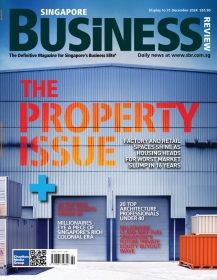
Myth busters: 2 myths that underrate ST Engineering
STE's pockets are fatter with a record S$12.7bn order book.
According to CIMB, having expanded its order book by 30% to a record S$12.7bn since the GFC, STE has emerged more defensive, with Aerospace, Electronics and Marine now better prepared for downturns.
Here's more from CIMB:
STE’s net cash bodes well for its search for M&As. We expect some successful earnings-accretive M&As by Aerospace, Marine and Electronics soon, going by STE’s aggressive hunt
for bargains.
STE management clarified that although newer planes could be equipped with higher composites that would require lesser maintenance of airframes, the bulk of the global fleet is still built on older technologies, making MRO an integral expense for operators.
STE is gaining MRO market share in the US, thanks to an exodus of competitors such as Air Canada’s in-house MRO, Aveos, PEMCO World Air Services, American Airlines’s internal MRO and Aviation Technical Services.
STE’s proven capabilities in different classes of aircraft could allow the group to capture strong demand for freighters.
Airbus forecasts that about 1,800 conversions would be needed by 2022.
Myth 1: new planes ordered will affect STE’s MRO business
New aircraft deliveries are not a new phenomenon as Boeing and Airbus have been steadily delivering about 1,000 new aircraft in total over the past five years, adding 3-4% to the global fleet p.a. This trend should continue with the global fleet expected to grow by a 3.7% CAGR from 20,840 to 29,955 units in 2022.
Although newer planes could be equipped with higher composites that would require lesser maintenance for airframes, the bulk of the global fleet is still built on older technologies. We estimate the average age of STE’s customers’ fleets at about 14 years, making MRO an integral expense for these operators.
Myth 2: cuts in defence budgets in the US and EU will affect STE’s defence business
Contrary to general belief, STE derives its defence business mainly from the Singapore Armed Forces. Land Systems is the division with the largest exposure to defence contracts, where Singapore accounts for about 60% of its revenue.
We expect Singapore Armed Forces to continue providing STE with a good baseload of defence work, in line with the steady growth of Singapore’s defence budget at a 4.1% CAGR over the past 10 years. Land System’s main exposure to international defence is through a £150m contract for Warthog vehicles awarded by the UK Ministry of Defence in 2008, fully delivered in FY11.
International defence contracts announced in recent years (2009-12) have been immaterial, comprising ammunition supplies. Despite the defence nature of its contracts, the group does not export landmines or cluster bombs.
























 Advertise
Advertise






